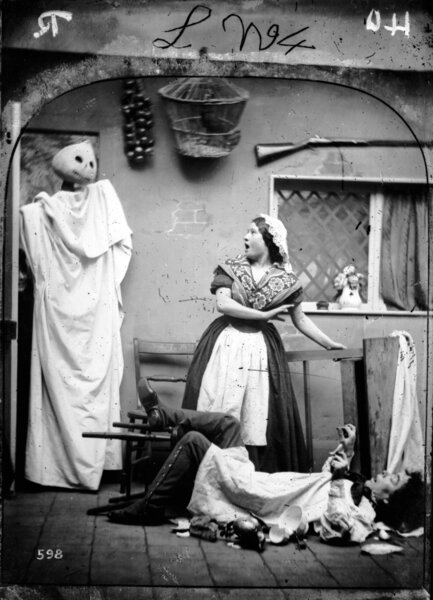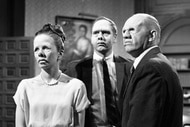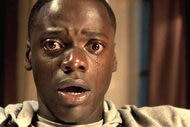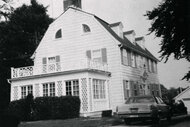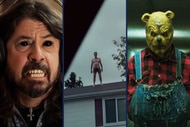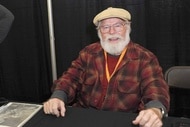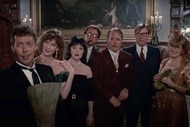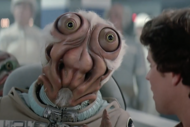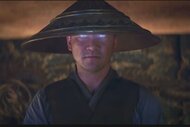Create a free profile to get unlimited access to exclusive videos, sweepstakes, and more!
The history of Halloween costumes
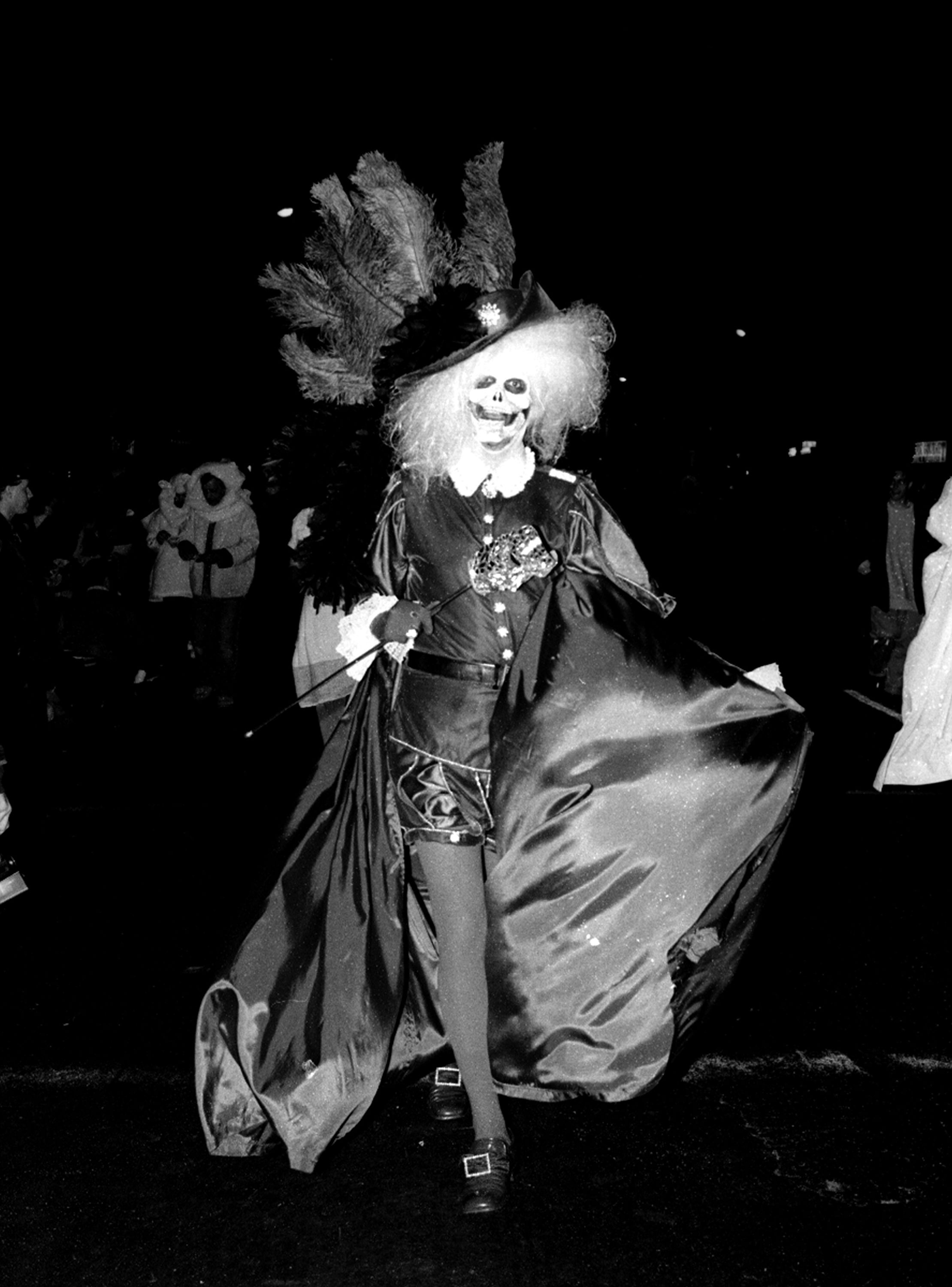
In 2018, more than 175 million Americans planned to take part in Halloween festivities. The survey, as conducted by the National Retail Federation, estimated that $9 billion would be spent on this holiday (an average of $86.79 per participant). Costumes, candy, and decorations all add up, which makes this is a very lucrative annual celebration — but costumes took up the largest chunk of that total (with 68 percent saying they would be purchasing their outfit), totaling a whopping $3.2 billion.
Halloween means dressing up as whatever supernatural being, meme, DCU, Marvel, or Stranger Things character is the most popular, but its origins date back 2,000 years. Marking the start of winter, the traditional British and Irish Celtic calendar began on November 1, so the pagan festival of Samhain was celebrated on October 31, marking the time in which the barrier between living and dead is at its weakest. The souls of the dead, spirits, and fairies can walk among the living causing all kinds of mischief and danger. Costumes were worn to disguise and protect from those spirits wishing to do harm.
A custom of dressing up (known as 'guising) and going from house to house performing short scenes in exchange for food or drink was part of the festivities. This harvest collection was seen as an offering to the souls wandering the land, which would then translate into good fortune. If a person could impersonate a supernatural being, it would ensure they could not be seen by the spirits — this sounds very "pretending to be a zombie by covering yourself in guts so you don't get eaten" a la The Walking Dead.
Christianity eventually got in on the Samhain action, rebranding it as All Hallows' Eve (which falls under a three-day period called Allhallowtide) and adopting some of these traditions. In the mid-eighth century, Pope Gregory III moved All Saints' Day from May 13 to November 1, making it a holy day. Soul-cakes were dished out to commoners going from door to door, and in exchange for singing songs for the souls of the departed, they would receive a baked treat. This period is also called Hallowmas, which is referenced in William Shakespeare's 1623 play The Two Gentlemen of Verona. Bridging the gap between pagan and Christian traditions, in some cases, those performing for soul-cakes would also dress up.
How did a European tradition turn into a billion-dollar industry? Immigration, as it often does, plays a big part. The Great Irish Famine of the late 1840s led to huge numbers of Irish families uprooting their entire lives to move to North America. Traditions followed, including the merged customs of Samhain and Allhallowtide, mixing pagan, druid, Catholic, and Protestant harvest-time celebrations. Carving turnips as a candle holder to ward off spirits was common practice, but pumpkins were more plentiful in the U.S. English and Scottish conventions also crossed the Atlantic with immigrants, including the aforementioned "'guising" for treats via song. The trick element is a modern adaptation, a punishment for not sufficiently compensating a performance.
The first community Halloween event is attributed to Anoka, Minnesota, in 1920, which is why it is the self-proclaimed Halloween Capital of the World. Businessman George Green was the brains behind the grand Halloween event, as he believed it would curtail the annual destruction of the town during the mischief that often took place on that evening. Storefronts were decorated with scary images, costume contests were held, and a huge parade took place. Nearly 100 years later, the event that was envisioned by Green is still going strong, with a month of activities taking place before the parade that started it all. Other communities took notice, and while it didn't completely put an end to the number of windows smashed and tires slashed, a new era of Halloween was born.
Witches have come a long way from a community to be feared and a method of persecution. As per the National Retail Federation Halloween survey, the number one answer for what adults were going to dress up as in 2018 was a witch. This traditional get-up was picked by 10.7 percent of respondents, with vampire trailing far behind as the next highest, with only 3.7 percent.
There could be several reasons for this, including how varied costumes can be. Some will go for a visual gag (such as the box of cereal/knife combo for "cereal killer"), current and past pop culture references, a sexy version, or something more "out there." A witch is easy because you can either dress as a famous movie or TV Wiccan or wear a conical wide-brimmed hat with any outfit.
Scrolling through Halloween costume archives, the most popular costume has apparently been a witch, from a model in 1925 to a dog photographed 20 years later. The simplicity of the witch's hat cannot be rivaled, even on the big and small screen. The Wizard of Oz showed how to do the scary version of this, while Veronica Lake in I Married a Witch added a touch of glam. The mass production of affordable costumes soon followed, with supernatural beings including witches, vampires, and werewolves being sold at stores like J.C. Penney.
Founded in 1937, Ben Cooper Inc. was one of the largest manufacturers of scary attire in the mid-20th century. Masks were one of the Ben Cooper Inc. specialties, including ones that look a lot like those worn by John F. Kennedy Jr. and his sister Caroline in 1963 while they spent time with their dad in the Oval Office.
Ben Cooper Inc. may have initially dominated this booming industry, but the Tylenol murders in the fall of 1982 impacted the Halloween costume business in a big way (though not all were deterred). Urban legends about poisoned candy and razor blades in apples had become a terrifying reality, and parents didn't want their kids dressing up collecting treats from strangers (in 1950, one woman was labeled a witch after she gave children heated coins).
In a 1989 interview with The New York Times, Ben Cooper Inc. president Bob Cooper explained that "there's been a change in the way that the holiday is celebrated.'' Fearing the risks of trick-or-treating led to adults hosting Halloween parties for their children, and in this environment they also elected to dress up. This isn't to say that some grown-ups didn't dress up prior to this, but in the same Times piece, Sam Cornish of the Collegeville Flag and Manufacturing Company noted that this shift in party venue motivated parents to up their costume game, too.
A homemade paper bag mask as seen in the above photo from the 1950s would no longer cut it (though the simplicity should be commended). Pop culture figures who have nothing to do with something scary were on sale in the 1960s, including The Beatles, thereby growing the list of things you could go as for Halloween from a relatively reasonable to an infinite number.
Celebrities are a source of revealing what is on-trend when it comes to Halloween, even in the pre-social media landscape. At a party in 1957, Elvis Presley opted for a slightly more sophisticated mask option over a paper bag — although his shawl-neck sweater wasn't particularly on theme.
Meanwhile, Debbie Reynolds in 1954 went with a more homemade approach, and nearly 30 years later she'd apparently picked something from her closet (along with a '50s sock hop look for her daughter Carrie Fisher and Chevy Chase as, well, Chevy Chase).
One consistent news story from during the mind-20th-century rise in popularity of Halloween costumes is the safety aspect. Several deaths occurred due to costumes catching fire, whether by matches or candles in pumpkins, as the cheap synthetic fabrics of the masks and garments were highly flammable. Other warnings regarding the restricted vision of face masks were repeated year after year, with face paint being seeing as the far safer option, along with repeated suggestions to replace candles in pumpkins with a flashlight.
There were several attempts to rebrand Halloween in the 20th century. For the duration of World War II, Chicago renamed it Conservation Day, in response to the wasteful cost of vandalism. However, Americans were treated to Halloween parties in the UK, complete with costumes emphasizing unity. This dress, as worn by Ann Stiner (who bears a striking resemblance to Queen Elizabeth II), was made from an old ballet dress; the caption on Hulton Deutsch's 1942 shot reads, "This costume came in for a lot of attention; all the Americans who had cameras took a picture of it."
In 1950, the Senate passed a resolution so the president could call Halloween "Youth Honor Day," which was an attempt to encourage "less destructive channels." Unlike Samhain and All Hallows' Eve, which successfully merged as a celebration, neither of these stuck. Halloween is now bigger than ever, and the costume options are limitless. 2018 figures even revealed a leap in pet costumes, with 31.3 million pet owners planning on purchasing or making a spooky outfit for their cat or dog.
Halloween costumes have had a long journey, from an ancient Celtic festival to the huge pop-culture-infused industry it is in 2019. Whether soul-cakes or candy, one consistency throughout the centuries is the ritual of gathering food as a group and dressing up. The costumes might be different, but the idea stays the same.
